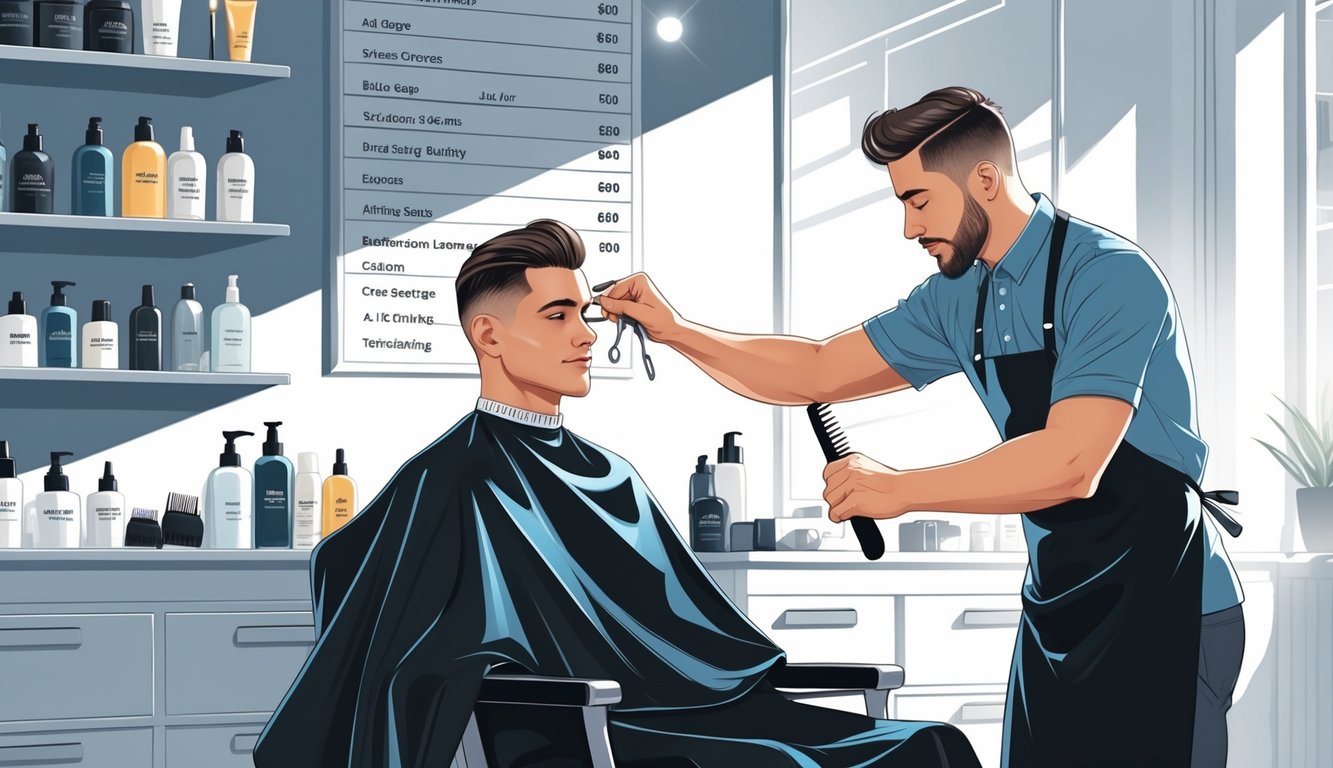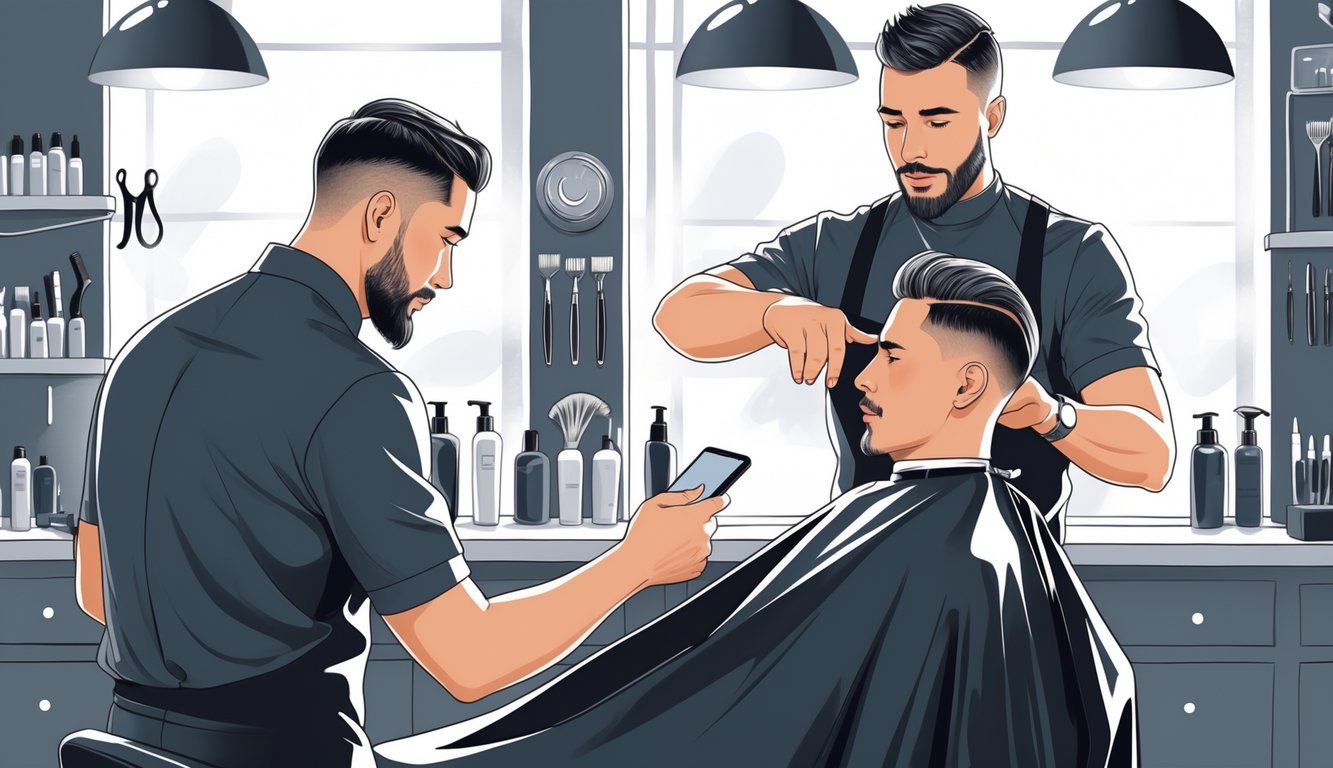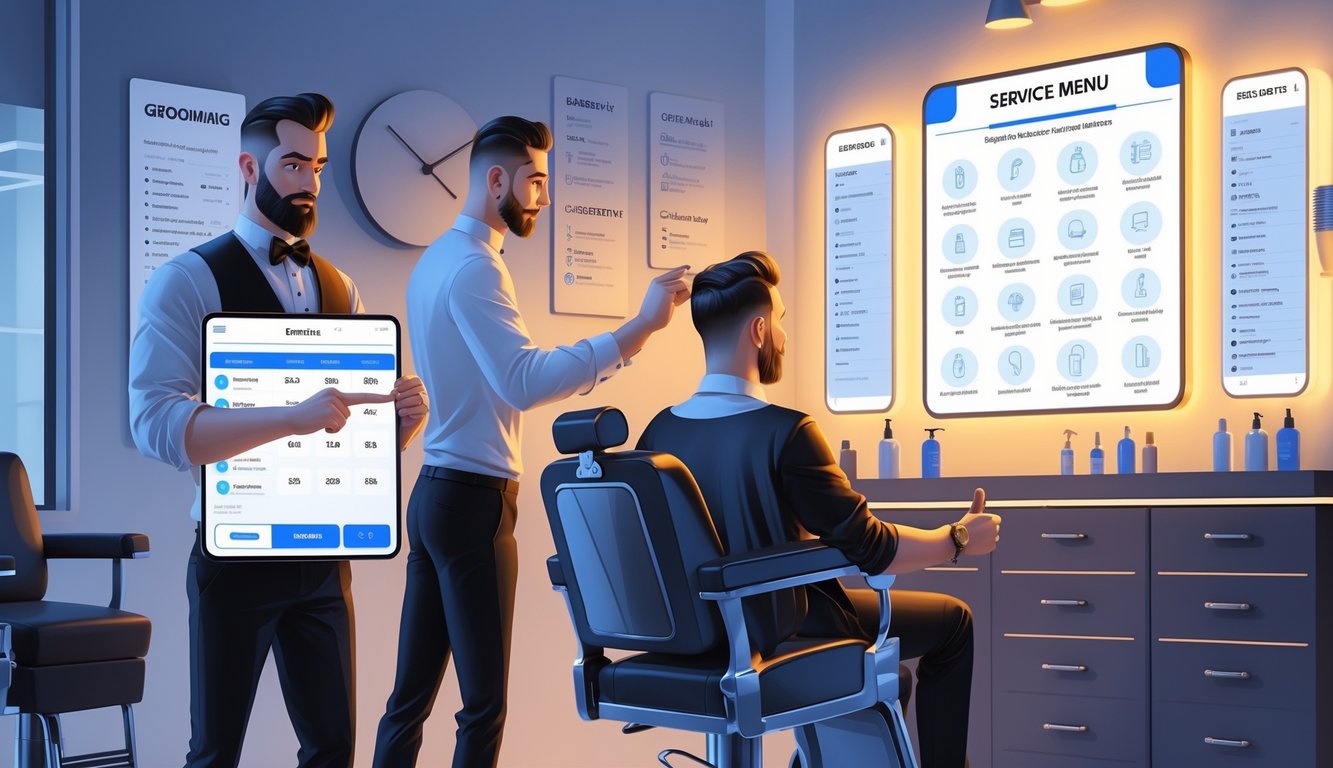
Key Factors Influencing Price Adjustments
Still baffles me how a simple men’s cut can suddenly cost $10 more, even when it’s just a neckline cleanup. Some reasons sound logical (like, okay, maybe moisturizing conditioner isn’t free), but others? I’m just guessing.
Time and Skill Required
Ever sat in that cracked vinyl chair thinking, “Neck trim’s quick, should be cheap?” Same. Until I started counting the minutes lost blending out some “easy” request. Color treatments? Forget it. You’re stuck there, hoping the dye doesn’t go orange, and the barber’s sweating every second.
People whine about “just ten extra minutes,” but every barber I know has a schedule that looks like Tetris. “Quick” requests? They never are. SQUIRE’s business tips say education and skill—plus squeezing in appointments—are why prices go up, not the fancy combs. And honestly, you’re paying for skill, not just time. Why do experienced barbers obsess over finishing touches? It’s not pride. It’s because fixing mistakes costs money and time—and that’s where those sneaky price bumps come from.
Product Usage and Add-ons
For some reason, everyone acts like shampoo and conditioner are free refills. I used to think so too, until I watched product bottles disappear by midweek. Good conditioner, pro moisturizers, “add-on” scalp rubs—none of that’s built into the cut price. Color? Even a little? Product costs spiral instantly.
Barbers adjust for every extra squirt of product, and it shows up in your total. Squire says pricing should keep up with material costs, and yeah, even those disposable neck strips add up. If you’ve got thick or treated hair? More product, bigger bill.
My own barber keeps a spreadsheet for every ounce of moisturizer. I still forget to tip enough.
Consultation and Customization
Want personal attention? Me too. Then I complain when my rate jumps after asking for advice on thinning edges or that “textured” look celebs have. Free consultation? Yeah, right. Ten minutes talking, running hands through hair, picking products—that’s not on any price sheet.
If you want custom advice (“Are these dyes making my scalp itch, or is it just me?”), that means your barber’s paid for extra classes, tried every serum on their own head, spent hours at workshops. That expertise? It’s gotta get paid for. SBG Funding points out pricing needs to reflect demand, customization, and time, and I’m pretty sure the guy who asked for “just a little more volume” last weekend didn’t realize his scalp assessment was on the bill.
Weird aside: my barber tried to upsell me a $25 digital scalp microscope scan last week. Did I buy it? Yeah. No regrets. Who wants mystery flakes?
Communicating Value to Clients

Shuffle the chairs, spill some talc, and—boom—half the price list is obsolete again. Clients walk in with last year’s prices in their heads, and the staff is still arguing about whether the “new” beard trim is worth an extra $5. Being “transparent” and actually talking about it? Messier than any YouTube advice.
Building Trust Through Transparency
Raising prices makes me sweat. Someone squints at the receipt and suddenly you’re stuck between giving a fresh fade and explaining inflation. I learned (the hard way) that saying too much works better than saying nothing. When I stopped with the cryptic little notes taped to the mirror and actually told people why their cut was $3 more, they grumbled less.
It’s bizarre, but as soon as I showed the breakdown—better clippers, longer consults, imported pomades—half the argument disappeared. Next time someone grilled me, I just pointed at the price chart and rattled off the reasons. No lectures. People just want a straight answer. Supposedly, the American Barber Association says clear talk boosts repeat clients by 20%. I believe it. Tried being mysterious once—never again. Disaster.
Educating Clients on Price Changes
Instagram stories? Nobody reads those. I just slide price updates into the chat during the cut. Not with a rant about my rent, but by showing what’s new. Switched to mineral shampoo? I demo it. Started using anti-static Kent combs? I mention it while I’m combing.
Someone asks about a price jump for a basic cleanup: “Imported razors, extra hot towel—try it.” No PowerPoint, just a quick demo. Your Barber Connect says regular check-ins help, so I do yearly reviews, not surprise hikes. When a client asked about loyalty discounts, I admitted my nerves and just showed the receipts. Sometimes, just being real about numbers makes people stick around—especially the ones who can sniff out cheap product from a mile away.
The Importance of Service Menus and Booking Systems

What drives me crazy? How fast shops swap prices. Why does a beard lineup now cost as much as a basic tee at Target? Every time I book, there’s a new menu or booking flow—prices jump overnight and I swear I missed the memo. All this service menu and booking system hype? Just makes me more confused about why a simple request is suddenly “premium.”
How Service Menus Guide Pricing
Try comparing fade prices between two shops—good luck. One calls it “precision blend,” the other “deluxe finish,” and suddenly there’s a $10 gap for what looks exactly the same. I talked to a barber who literally said, “We adjust pricing every quarter based on what books fastest. If everyone wants beards at 2 p.m., that’s ‘premium time’ now.” Honestly, who decided afternoons are expensive?
What I’ve figured out: a clear service menu does half the explaining before you even walk in. Real details—what’s included, timing, “hot towel” or “straight razor”—kill surprise add-ons and make it easier for staff to defend a price hike. Still doesn’t explain why “Executive Finish” exists, but at least it’s written down. Barbershop menu descriptions apparently drive more first-time bookings, so shops keep tweaking the wording for clarity and, let’s be honest, upsell power.
Online Booking and Transparency
Let’s talk about online booking for a second, because, honestly, I’m still not sure if it’s a blessing or just another way to squeeze a few extra bucks out of me. Like, suddenly there’s a $5 “express” fee at 8:00 a.m.—was that always there? And the real kicker: half the time, I don’t even see what I’m paying for until I’m staring at the checkout screen, squinting at all those weird little add-ons. I guess Appointy barbershop software is supposed to make everything “transparent,” but it just means I can’t really argue later when the receipt’s got every single charge spelled out. Not sure if that’s actually better.
I’ve asked a few barbers about these systems, and most of them seem pretty into the data—like, they’ll know Mondays are dead for beard trims but Friday nights are a madhouse for shape-ups. They mess with prices behind the scenes, no need for a neon “new price” sign or awkward conversation. Clients get fewer surprises… unless someone forgets to update the menu online, which, let’s be honest, happens more than anyone wants to admit. And oh, those barbershop booking systems love to brag about reminding “no-show” clients, but do they ever ping me when my usual skin fade jumps up two bucks? Nope.



